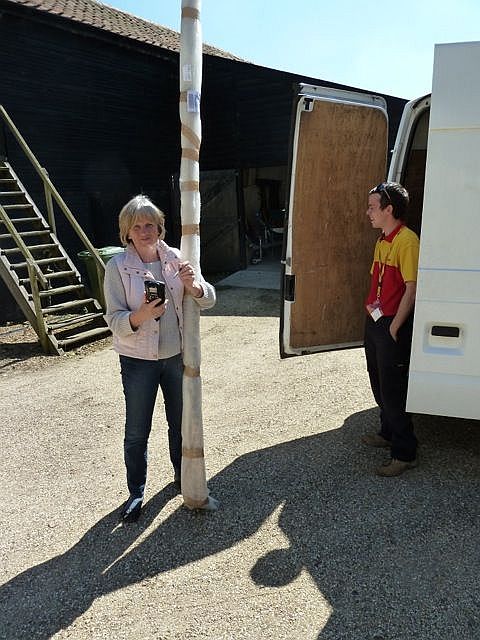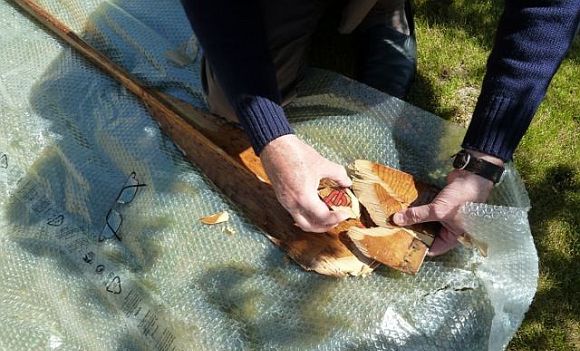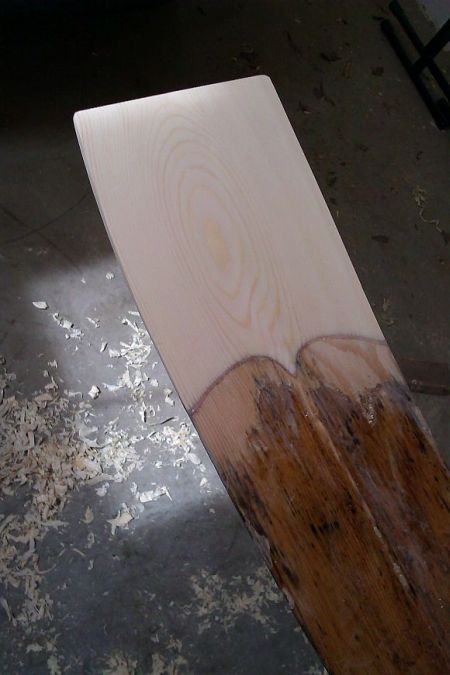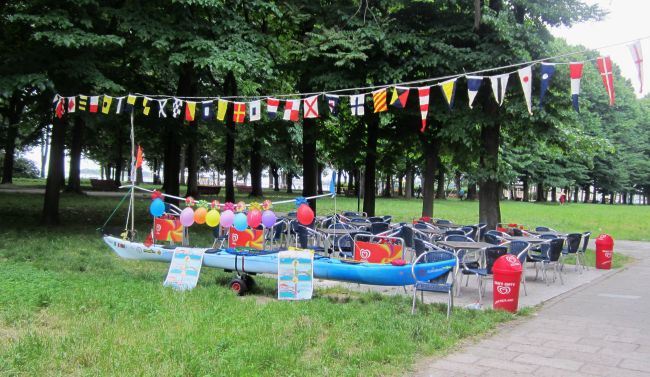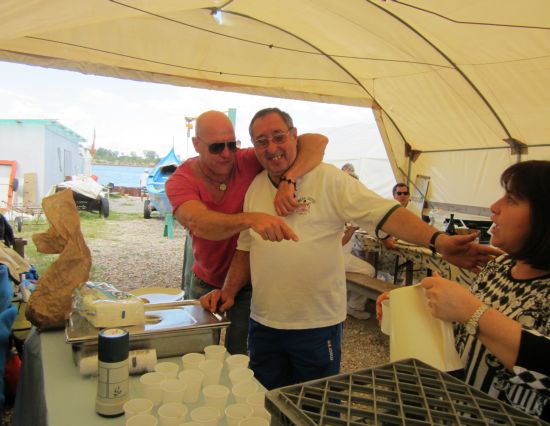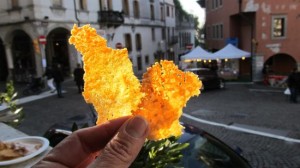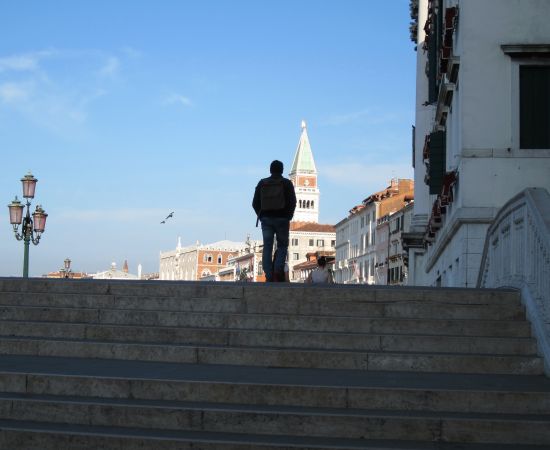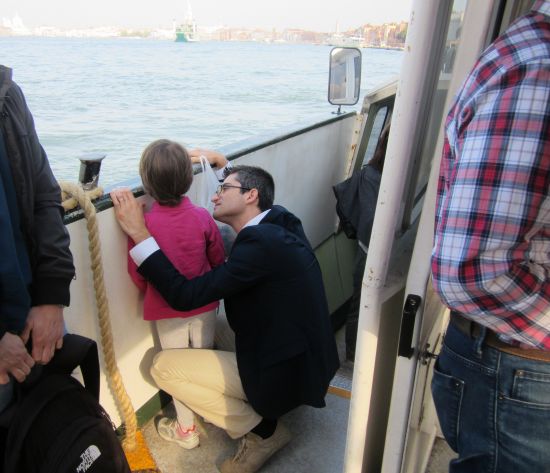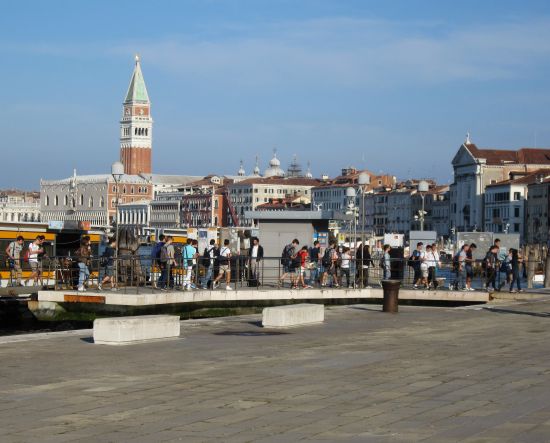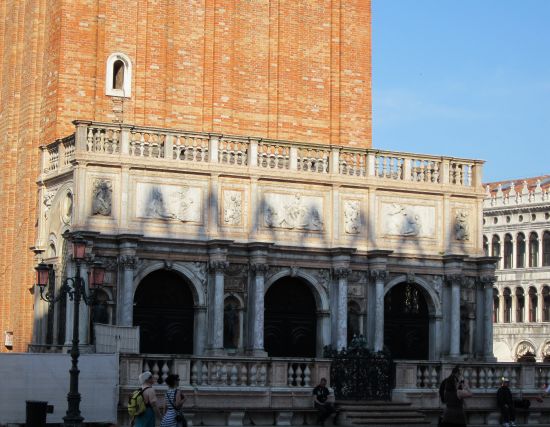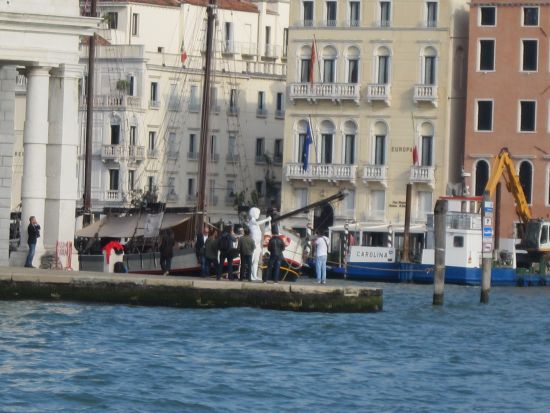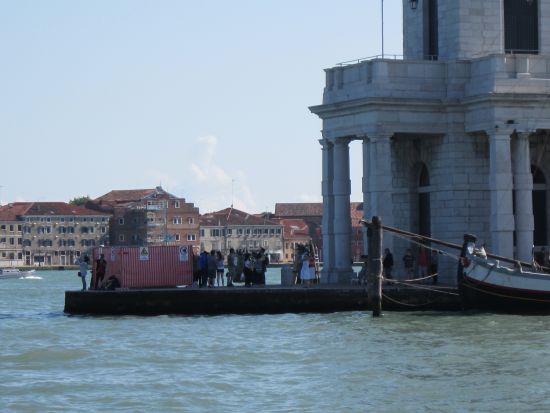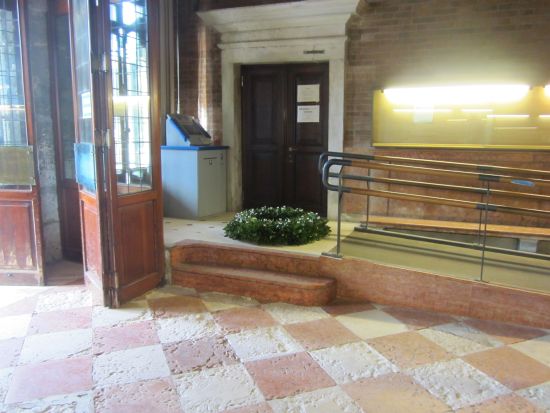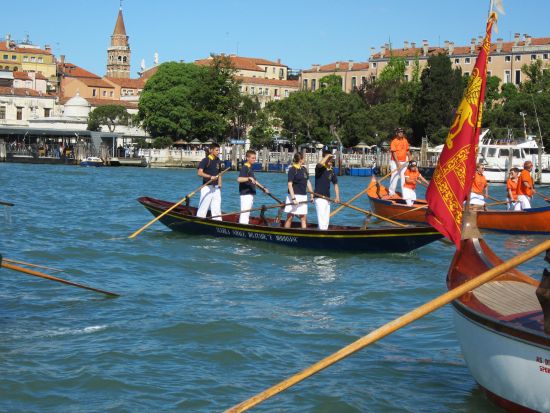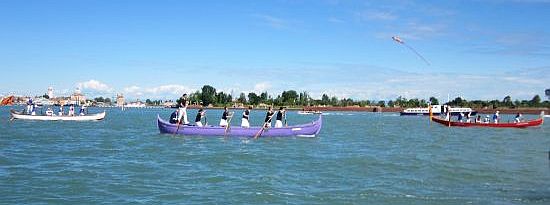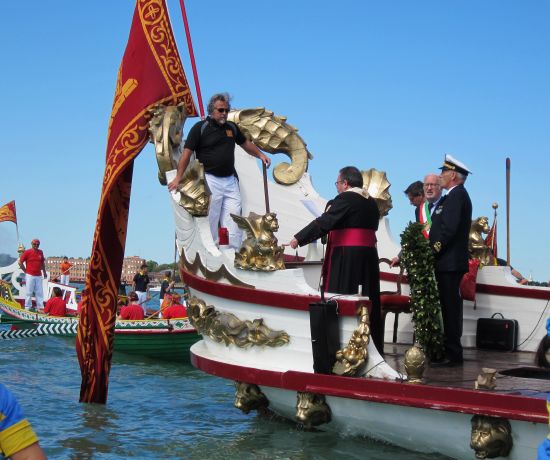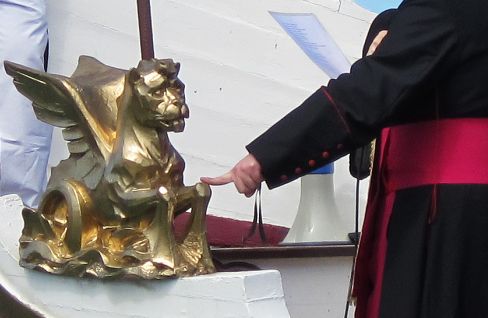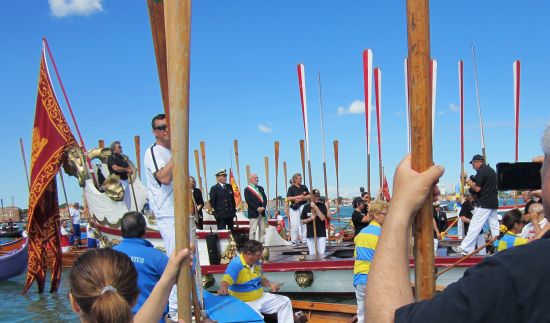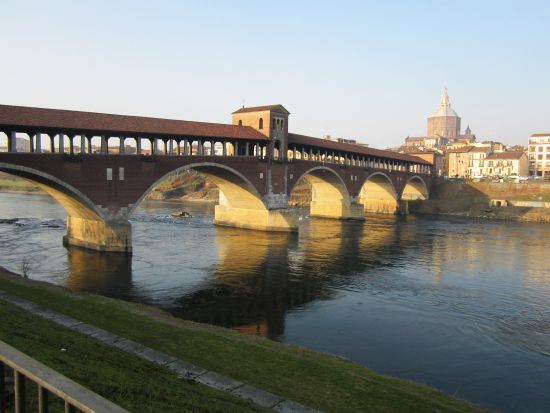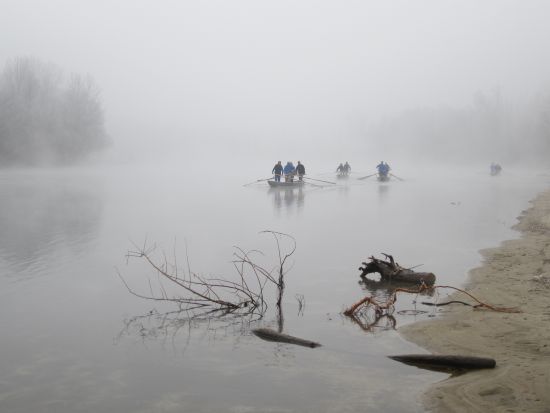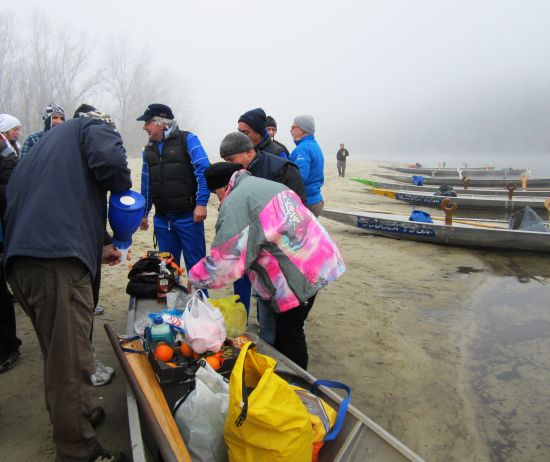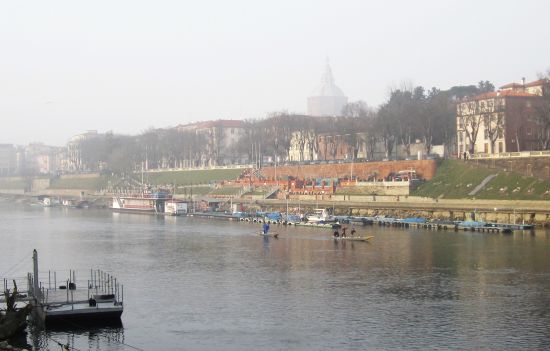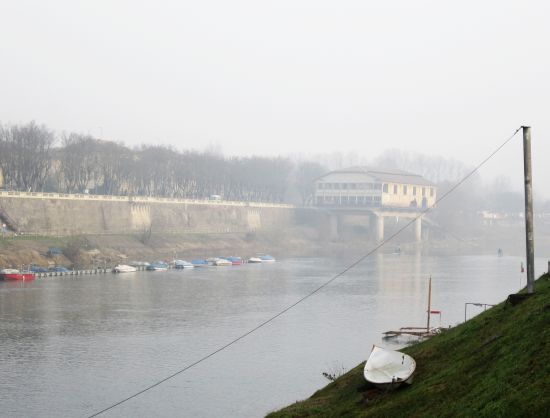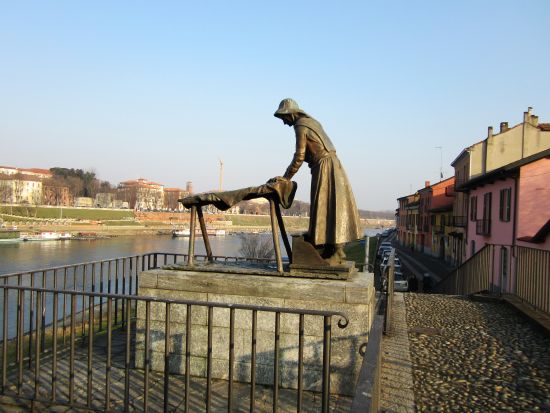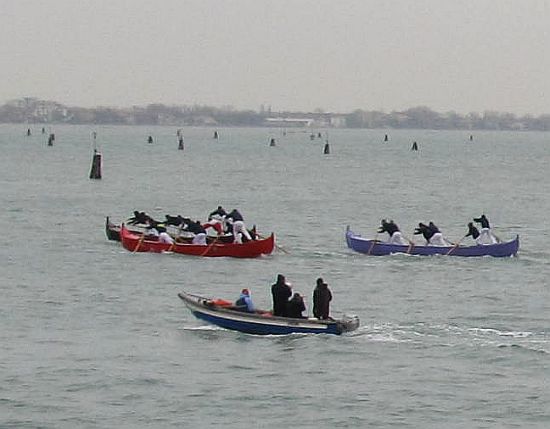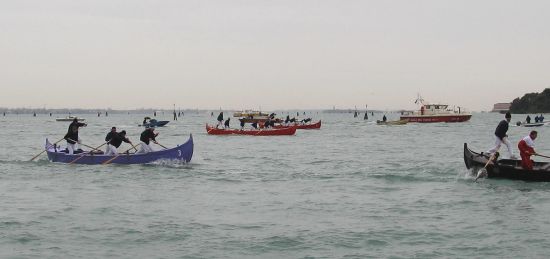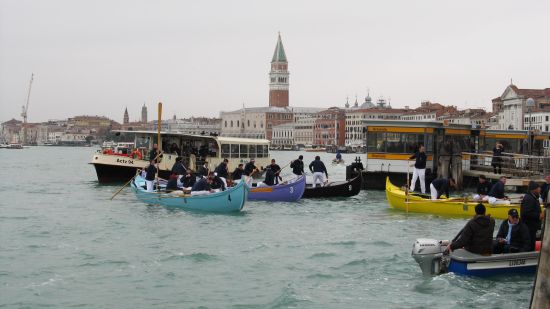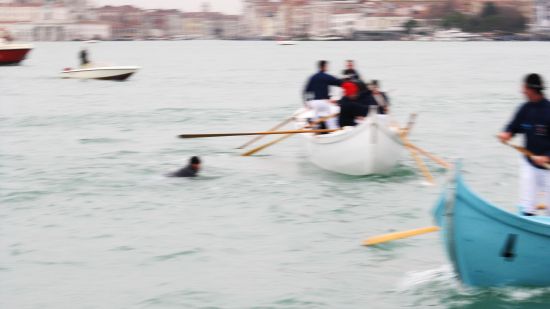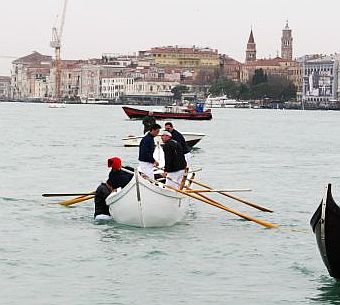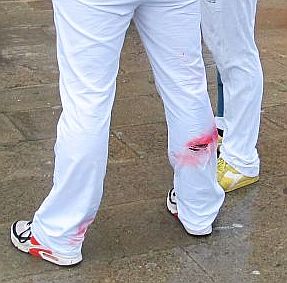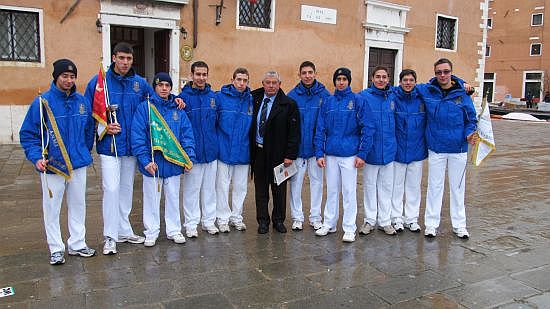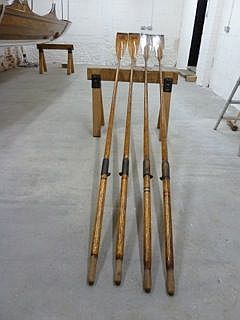
I toil for two weeks every May in the registration office of the Vogalonga. And every year, something interesting occurs. This year, that “something” was more than usually diverting. It had to do with the search and rescue of a foreign oar.
Everything started with an e-mail a week before the event, sent to the office from an English rower, Dr. Adrian Hodge; he was planning to come with his Thames skiff, “Cherub,” and a group from his rowing club (Norfolk Skiff Club). As it was the first time they were undertaking this little quadrille, he wanted information on the parking and boat-launching facilities, which I took it upon myself to supply, along with a batch of my usual unsolicited observations and comments, no extra charge.
Technical digression: “Cherub” is 8 meters/26 feet long, is said to date from the 1890s, and was built at Richmond on Thames. Unfortunately all the records of the company which built her were destroyed when the boat yard was sold in the 1960s, so Adrian doesn’t know who was the original owner.
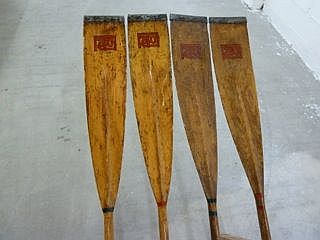
So they came, they rowed the Vogalonga, they pulled “Cherub” out of the water, loaded it on the trailer, drove the 1,700 km (1,056 miles) home to Norfolk, and unloaded the boat.
Following is a highly condensed version of the most pertinent of the numerous e-mails that ensued.
Dear Erla,
The journey back to England was uneventful, apart from the weather, and I have just inspected the skiff to make sure that she had returned unscathed. To my horror I discovered that we have lost a scull (oar). A moment’s thought and I remembered that we had used a scull to position the lifting strops for the crane on Monday. I suppose that someone put it down on the ground and we simply left it behind. It was beside the orange painted fixed crane and Michele was in charge of the crane team. I’m sorry to lose it because it is antique and carries the monogram of a previous owner of the boat, so, if you have the opportunity to put the word around, and if it turns up, keep it somewhere and I hope that it can be repatriated next year. I’m sending you a picture too, so that if you see it decorating a bar, you will know where it came from! Since the photos it has lost its copper end and had some repairs to the tip.
Although I dislike disasters, I do enjoy a challenge, so I leapt into action.
Dear Adrian:
I have spoken with the organizers of the Vogalonga and they say they know nothing, and have heard nothing, about your oar.
However, they did suggest that you tell me where you took the boat out of the water. If you would tell me this detail, I will attempt to contact whoever is responsible for that area.
He replied: We lifted the boat out at the quay just before the bridge to Tronchetto. There were three cranes and we used the centre one which was painted orange and had Scalo Fluviale and a number 2 on it. Michele was in charge. He was driving the forklift truck.
I called the Scalo Fluviale, and they knew all about the oar. “Sure, we have it,” they told me. Why should there be panic, stress, visions of mayhem? “It’s right here.”
OAR FOUND!!!! I e-mailed Adrian. I love good news, especially when it’s unexpected.
You are incomparable, he replied. (I liked that bit.) My prayers to St. Anthony of Padua have been answered. My next plan was to get some real Catholics to pray to him too.
On the practical front, the oar is 290cm (9.5 feet) long and weighs 2.0 kg (in fact, a bit less). Normal parcel post is restricted to 1.5 meters (4.9 feet). I think that the most practical method will be for me to fly out and collect it, but first I must make sure the airline will carry it and that I can get it to the airport.
That was an interesting aspect of the project. How was that going to work? Simple: It wasn’t, as Adrian quickly discovered.
The airlines put it in the same category as a vaulting pole and won’t carry it. (I haven’t found time yet to satisfy my newfound curiosity about how vaulting poles make it from home to the Olympics.) DHL will carry items up to 300 cm long, so that must be the default method. I can fly to Venice Tuesday morning, collect the item, wrap it, and deliver it to a DHL collection point, then fly back Tuesday evening.
The day before his arrival, I went to the Scalo Fluviale to locate the oar. There it was, propped against the office wall, looking pensive.
Some phone calls had already revealed that the nearest DHL collection point was at Piazzale Roma, a mere few minutes away. This was another happy surprise; I had had nightmare visions of some storefront in the heart of darkest Mestre. I went by to check on the details of the consignment. On the way home and I bought an exaggerated amount of bubblewrap (nightmare visions of coming up two inches short); unfortunately the bubbles were small, but there was no alternative. I wasn’t up to rigging a splint, and figured if we used enough (but not so much as to exceed the length limit), it ought to work.
Yes, I had become “we.”
Tuesday morning I went to Piazzale Roma to meet Adrian and his wife, Lynne, as they got off the bus from Treviso airport (sure, let’s add another hour and ten minutes each way to the day’s schedule…).

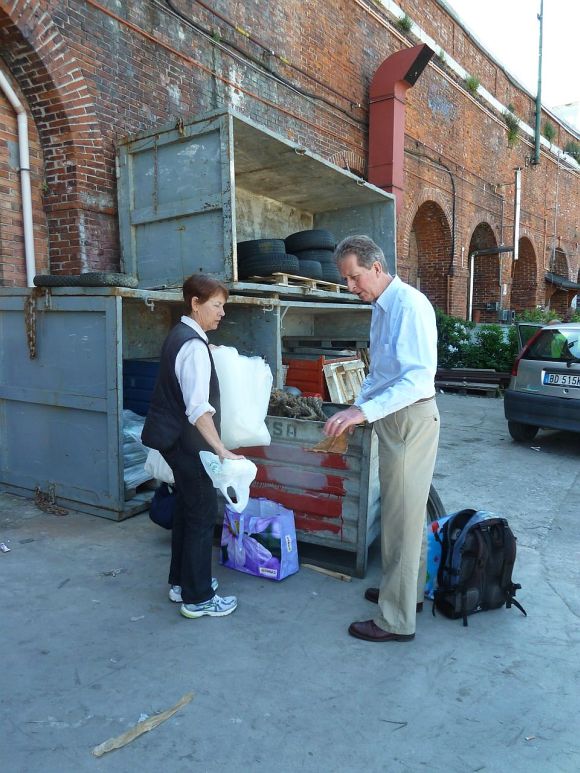
We walked to the Scalo Fluviale; the oar was brought out, we wrapped it, we distributed bottles of wine dripping with gratitude to all and sundry (for the record, it was Enrico who had found the oar). We carried the oar, like some titanic assegai, back to Piazzale Roma and the DHL office, where we created a moment of consternation.
Paperwork completed, payment made, oar consigned, deep sighs of relief and satisfaction breathed, we went to a nearby trattoria where Adrian and Lynne treated me to a sumptuous and princely lunch.
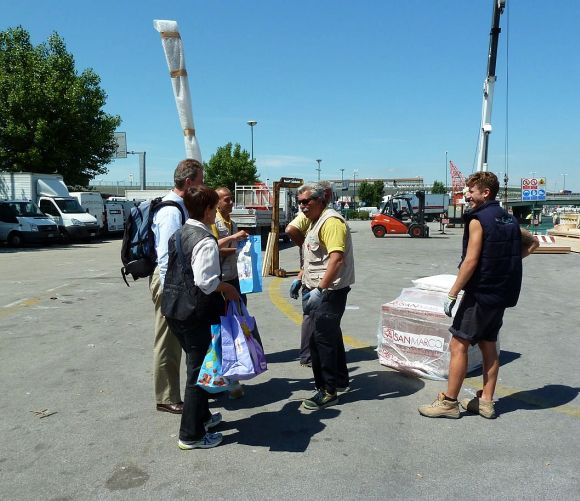
But hold the happily-ever-after. “We must expect reverses, even defeats,” Robert E. Lee remarked, though not to us personally. “They are sent to teach us wisdom and prudence, to call forth greater energies, and to prevent our falling into greater disasters.” I’ll make a note of it, because…..
The oar arrived at 3:15, Adrian e-mailed me, but the end, complete with monogram, was smashed to pieces. I tried to fit it together like a jigsaw, but the wood was crushed too much….It must have been crushed under something heavy, because the wood is deformed. I can’t save this limb and must amputate. I’ll make a sloping cut straight across where the wood is sound and glue on a new piece of wood. Then I’ll shape a new end. Many oars are made like that from new. Unfortunately the monogram will be lost. I’m debating with myself whether to fake that. In general my policy is one of honest repair rather than renovation, preserving as much of the original as possible, but clearly showing any new material.
Adrian is currently involved in some other, more urgent projects, so I haven’t seen the final version yet. But as any pulverized oar will tell you, the worst is clearly over.
I guess now you could say we’re at happily-ever-after. In any case, the adventure has been immortalized in a clip which is on the club’s website (and on YouTube) — set to the tune of the irrepressible Jimmy Durante singing “The Guy Who Found the Lost Chord.” For e-mail readers, here’s the link: http://www.youtube.com/watch?feature=player_embedded&v=Kby8OYXyUtQ
